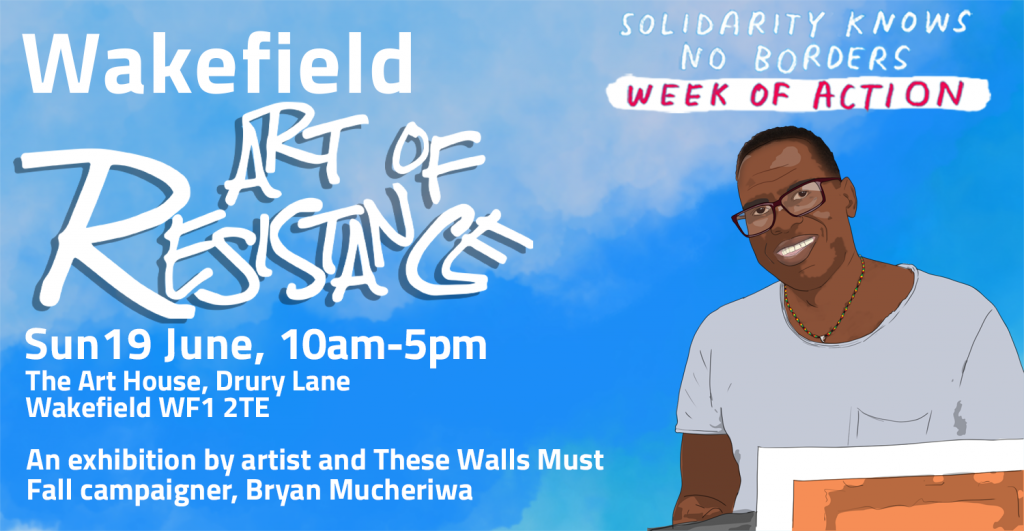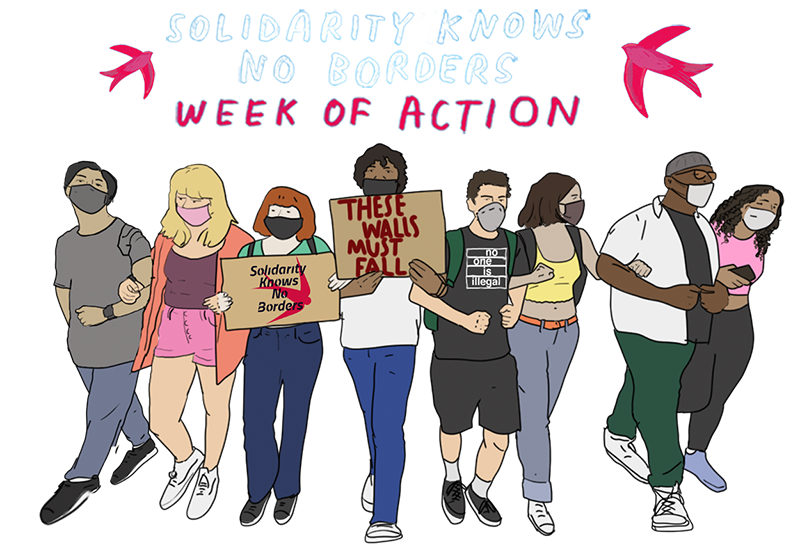
Zimbawean artist Bryan Muchiwera, a campaigning member of These Walls Must Fall in Yorkshire, opens his first exhibition in Britain at the Art House, Wakefield on Sunday 19 June.
The Art of Resistance exhibition is free, and part of the Solidarity Knows No Borders week of action.
The works include “Shattered”, “Heartbroken”, “The Bridge”, and “The Lost Shoe”. Made from copper and galvanised wires, pebbles from skips, and logs and roots from the canal.
At the exhibition you will also find informaiton about people seeking sanctuary and other migration issues, freedom music, copies of the Yorkshire Peoples’ Bill (a community alternative to Priti Patel’s Borders Bill), and an open mic for people to speak out.
About the exhibiiton
I wanted to show the viewers that even without anything we can produce a piece of art whatever is around us and tell stories through art.
These are twisted miniature wire trees to represent the interdependent relationship people have with trees. Trees have captured the human imagination since the beginning of time, and are vital as the biggest plant on the planet – they give us oxygen, store carbon, stabilize the soil, and give life to the world’s wildlife. Each tree has been made from the wires handpicked in Wakefield and the timber and roots of the tree which were dumped in the local canal.
I have put the twisted wire and the wood together to create a story about refugees and gave them title Lost in the Woods, Heartbroken, Shattered and Long Walk. And to say where there’s a tree there is hope. As a refugee I have watched closely on how refugees and asylum seekers have gone through to seeking sanctuary to get to a place where they can call home and thought this will bring some comfort if I reflect how and why people do migrate. The journey some of us have taken, risking their lives and the answer is there is always light, and darkness, and I think we should have a choice to choose where we feel is safe or right to live. But there are borders and barriers where you can’t cross especially when you’re to seek refuge.
In making this piece of art I used copper and galvanised wires from the local skip yard and picked 5mm pebble from the same skip and got the logs and roots from the canal. I then twisted the wires to make different types of trees and I use stones as the stands. I then got two tables where I will put the timber with my twisted wire miniature tree and the two tables will face each other on about a metre apart and I will put a very secured bridge connecting the two tables one with lights and rich the other looking dark and barren and the other side of the bridge I’ll put a very narrow and scary unsecured bridge still connecting to the other table. These two tables will be representing two countries or continents. The two bridges are to show how can one manage to cross depending on how wealth you’re otherwise the poorer will suffer or risk their lives. The border will stop the poorer from crossing. A lot of lives have been lost when people try their best to earn a basic standard of living. Together we can fight the anti-refugee laws and live together in harmony.
Bryan Mucheriwa

